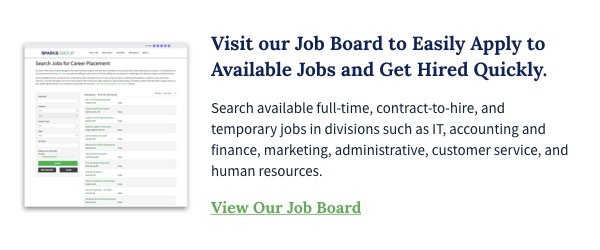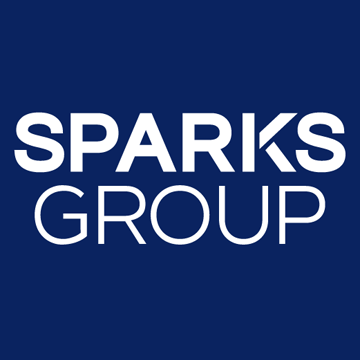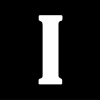

13 Best Practices for Writing a Cover Letter
Writing a cover letter is no easy task. If a hiring manager sees two equally great resumes, it would be the cover letter that ultimately determines who gets the job and who has to continue the arduous application process. We're here to help you create the an amazing profile with our 13 best practices for writing a cover letter.
in this guide we'll teach you:
- Cover letter writing practices for content
- Best practices for formatting and addressing your letter
- How to find keywords and why integrate them in your cover letter
Before we dive into it, have one last look at your resume and make sure it's flawless.
Head over to our resume builder for some expert tips on how to best present your experience and get the job.
A good cover letter is a compilation of great content and skillful formatting. You have to pay attention to the small details and emphasize your relatable strengths.
1. Address your cover letter appropriately
The first thing that the hire manager sees on your cover letter is how you address them, so make sure you do it correctly.
Forget the impersonal "to whom it may concern" and get specific. If possible, use the hiring manager's name. If you can't find it on the job ad or the company website, try social media. LinkedIn is a great source of information.

If you can't find the name anywhere, use "Dear Hiring Manager." For more tips, check out 7 Cover Letter Opening Line Mistakes to Avoid (Examples) .
2. Have a clear message
Your cover letter has to be focused. The hiring manager has no time to read neither an essay version of your resume, nor irrelevant information.
Stick to the main questions:
- What position you're applying to
- How your experience is relevant
- What you want to accomplish in that role
- How you'll be of use to the company
3. Show relatable experiences and interests
One good practice for writing a cover letter is to stick to relevant information. While you may have the coolest hobbies and interests, like rock climbing or tango dancing, not all are relevant to the job you're looking to get.
Choose the hobbies that most closely relate to the position and talk about them. For example, if you're applying to be a web designer for a yoga company, talk about your love for yoga.
If you're applying to a bank that organizes 10K charity runs annually, talk about your passion for running. Make every piece of information on your cover letter relatable to the job.
4. Demonstrate motivation
Writing a cover letter (especially when the application doesn't require it) shows motivation. You should take it a step further and discuss why you're so eager to get the position.

Would this position help you make a difference in the world? Has it been your lifelong dream, or do you just feel very passionately about the daily tasks? Let the hiring manager know all that in the cover letter.
5. Do your research on the company
What do you do when you want to convince someone to do something for you? You find out as much information about them as you can and then use it in your favor. The same applies to job hunting.
Find out everything you possibly can about the company, the team and the work. Then address it in your cover letter.
Use the company name and whatever data you can quote. This will show the hiring manager that you've done your homework which would give you an edge.
6. Use keywords from the cover letter
The job description is a powerful weapon you can use in your cover letter. How? Find out what the key responsibilities of the position are and explain how you're qualified and motivated to perform them.
For example, if the ad says:
Responsibilities of the Sales Assistant: Provide great customer service by travel to retail stores throughout Boston to promote client services and compile a list of leads . Approach consumers during in-store retail campaigns and educate them about our product, making recommendations based on their needs . Run sales presentations during in-store sales campaigns with the goal of increasing brand awarenes s .
Report to the management team monthly.
The keywords here are highlighted in bold. Those are the main tasks that the ideal candidate would be able to execute.
Knowing that, a passage of a good cover letter would read:
cover letter example:
My experience with customer service over the past 3 years has showed me how to educate consumers on products and services, making sure that I cater to their needs. I enjoy collaborating and working in a team, and am always able to run a sales presentation at any given moment.
Promoting brand awareness and generating new leads are tasks that I perform with ease and motivation, and I'd be happy to do this for (Company Name).
Pinpoint the keywords on the ad and use them. This way you will reassure the hiring manager that you are the right candidate for the job.
7. Tailor each cover letter
Do you ever wear a suit that doesn't fit well to a job interview? No, you tailor it. This is how you have to approach each cover letter you send out.
While it's easy to send out a generic cover letter to 20 companies, the chances of you getting a job this way are slim.

Be specific and target your efforts to the company in question. For more tips, read How and Why to Tailor a Cover Letter .
8. Remove anything irrelevant
Recruiters are busy. Don't waste their time by adding irrelevant information or rambling about past experiences that have nothing to do with the position you're applying to. Keep your content short and clear.
9. Mention any personal references
Did someone from the company tell you about the position? Do you have a connection you can mention in the cover letter? If yes, do it.
This should be done in passing and delicately. You can say:
"(Name of Contact) who referred me to apply to the position explained that the job entails..."
A delicate mention of a connection can work in your favor.
10. Don't repeat your resume
Remember that the resume presents the facts of your career. The cover letter shows your motivation for applying.
While the cover letter may mention details from your resume, it should be completely different from your resume.
11. Be confident about your strengths and don't talk about weaknesses
The cover letter is supposed to show you in the best light possible, just like your resume. This is not the time to be shy or talk about your weaknesses.
Focus on what you're good at. The recruiter might ask about your weaknesses during the interview anyway, but don't jump the gun on that one.
12. Always proofread
We can't stress this tip enough. Always proofread your work. You might have the best content the hiring manager has ever seen, but if it's full of typos and grammatical errors, you won't get the job.
13. Format properly
Formatting is very important when it comes to writing a cover letter. You only get one page to work with, so you have to make the best out of it.
Stick to a neat font at a size between 9 - 11. Some of the best fonts for a cover letter are Times New Roman, Verdana, Calibri, Arial, and Tahoma.
For more tips on formatting, see our guide on Cover Letter Formatting Guidelines .
The best practices for writing a cover letter are simple and straightforward. Keep your content strong and to the point. Proofread and format well. Do your research and don't repeat your resume in a story format.
Try to incorporate as many of these 13 tips as you can and confidently send out your applications.
If you need a hand with your resume, head over to our resume builder .
Resume Builder
Create a Resume in Minutes with Professional Resume Templates
Related Articles

MintResume Employee Morale Scholarship 2019
Are you an undergraduate or graduate college or university student?MintResume is proud to announce a $1000 scholarship for students studying in the...

How To Write An Email Cover Letter
What comes to mind when you hear "cover letter?" Are you thinking of a perfectly polished one-page document that goes in between your perfectly pol...

How To Format A Cover Letter (Examples)
Great writing is just step one of the process to getting your dream job. While your text may be amazing, featuring engaging stories, relevant examp...

How to Write an Amazing Cover Letter in 4 Paragraphs
Cover letter writing isn't easy. A lot goes into it - storytelling, outlining relevant accomplishments, talking about transferable skills, and shar...

The Winning Cover Letter Sample For a Resume
Table of Contents How to make your resume and cover letter correspond What information to include on your cover letter A cover letter sample...

The One Trick That Will Make Writing Cover Letters Super Easy
When pondering how to write a cover letter, many candidates get frustrated. Where do you start? What do you talk about? Where do you find this "wow...

How it works
Transform your enterprise with the scalable mindsets, skills, & behavior change that drive performance.
Explore how BetterUp connects to your core business systems.
We pair AI with the latest in human-centered coaching to drive powerful, lasting learning and behavior change.
Build leaders that accelerate team performance and engagement.
Unlock performance potential at scale with AI-powered curated growth journeys.
Build resilience, well-being and agility to drive performance across your entire enterprise.
Transform your business, starting with your sales leaders.
Unlock business impact from the top with executive coaching.
Foster a culture of inclusion and belonging.
Accelerate the performance and potential of your agencies and employees.
See how innovative organizations use BetterUp to build a thriving workforce.
Discover how BetterUp measurably impacts key business outcomes for organizations like yours.
A demo is the first step to transforming your business. Meet with us to develop a plan for attaining your goals.

- What is coaching?
Learn how 1:1 coaching works, who its for, and if it's right for you.
Accelerate your personal and professional growth with the expert guidance of a BetterUp Coach.
Types of Coaching
Navigate career transitions, accelerate your professional growth, and achieve your career goals with expert coaching.
Enhance your communication skills for better personal and professional relationships, with tailored coaching that focuses on your needs.
Find balance, resilience, and well-being in all areas of your life with holistic coaching designed to empower you.
Discover your perfect match : Take our 5-minute assessment and let us pair you with one of our top Coaches tailored just for you.

Research, expert insights, and resources to develop courageous leaders within your organization.
Best practices, research, and tools to fuel individual and business growth.
View on-demand BetterUp events and learn about upcoming live discussions.
The latest insights and ideas for building a high-performing workplace.
- BetterUp Briefing
The online magazine that helps you understand tomorrow's workforce trends, today.
Innovative research featured in peer-reviewed journals, press, and more.
Founded in 2022 to deepen the understanding of the intersection of well-being, purpose, and performance
We're on a mission to help everyone live with clarity, purpose, and passion.
Join us and create impactful change.
Read the buzz about BetterUp.
Meet the leadership that's passionate about empowering your workforce.
For Business
For Individuals
How to write a great cover letter in 2024: tips and structure

A cover letter is a personalized letter that introduces you to a potential employer, highlights your qualifications, and explains why you're a strong fit for a specific job.
Hate or love them, these brief documents allow job seekers to make an impression and stand out from the pile of other applications. Penning a thoughtful cover letter shows the hiring team you care about earning the position.
Here’s everything you need to know about how to write a cover letter — and a great one, at that.
What is a cover letter and why does it matter?
A professional cover letter is a one-page document you submit alongside your CV or resume as part of a job application. Typically, they’re about half a page or around 150–300 words.
An effective cover letter doesn’t just rehash your CV; it’s your chance to highlight your proudest moments, explain why you want the job, and state plainly what you bring to the table.
Show the reviewer you’re likable, talented, and will add to the company’s culture . You can refer to previous jobs and other information from your CV, but only if it helps tell a story about you and your career choices .
What 3 things should you include in a cover letter?
A well-crafted cover letter can help you stand out to potential employers. To make your cover letter shine, here are three key elements to include:
1. Personalization
Address the hiring manager or recruiter by name whenever possible. If the job posting doesn't include a name, research to find out who will be reviewing applications. Personalizing your cover letter shows that you've taken the time to tailor your application to the specific company and role.
2. Highlight relevant achievements and skills
Emphasize your most relevant skills , experiences, and accomplishments that directly relate to the job you're applying for. Provide specific examples of how your skills have benefited previous employers and how they can contribute to the prospective employer's success. Use quantifiable achievements , such as improved efficiency, cost savings, or project success, to demonstrate your impact.
3. Show enthusiasm and fit
Express your enthusiasm for the company and the position you're applying for. Explain why you are interested in this role and believe you are a good fit for the organization. Mention how your values, goals, and skills align with the company's mission and culture. Demonstrating that you've done your research can make a significant impression.
What do hiring managers look for in a cover letter?
Employers look for several key elements in a cover letter. These include:
Employers want to see that your cover letter is specifically tailored to the position you are applying for. It should demonstrate how your skills, experiences, and qualifications align with the job requirements.
Clear and concise writing
A well-written cover letter is concise, easy to read, and error-free. Employers appreciate clear and effective communication skills , so make sure your cover letter showcases your ability to express yourself effectively.
Demonstrated knowledge of the company
Employers want to see that you are genuinely interested in their organization. Mention specific details about the company, such as recent achievements or projects, to show that you are enthusiastic about joining their team.
Achievements and accomplishments
Highlight your relevant achievements and accomplishments that demonstrate your qualifications for the position. Use specific examples to showcase your skills and show how they can benefit the employer.
Enthusiasm and motivation
Employers want to hire candidates who are excited about the opportunity and motivated to contribute to the company's success. Express your enthusiasm and passion for the role and explain why you are interested in working for the company.
Professionalism
A cover letter should be professional in tone and presentation. Use formal language, address the hiring manager appropriately, and follow standard business letter formatting.

How do you structure a cover letter?
A well-structured cover letter follows a specific format that makes it easy for the reader to understand your qualifications and enthusiasm for the position. Here's a typical structure for a cover letter:
Contact information
Include your name, address, phone number, and email address at the top of the letter. Place your contact information at the beginning so that it's easy for the employer to reach you.
Employer's contact information
Opening paragraph, middle paragraph(s), closing paragraph, complimentary close, additional contact information.
Repeat your contact information (name, phone number, and email) at the end of the letter, just in case the employer needs it for quick reference.
Remember to keep your cover letter concise and focused. It should typically be no more than one page in length. Proofread your letter carefully to ensure it is free from spelling and grammatical errors. Tailor each cover letter to the specific job application to make it as relevant and impactful as possible.
How to write a good cover letter (with examples)
The best letters are unique, tailored to the job description, and written in your voice — but that doesn’t mean you can’t use a job cover letter template.
Great cover letters contain the same basic elements and flow a certain way. Take a look at this cover letter structure for ref erence while you construct your own.
1. Add a header and contact information
While reading your cover letter, the recruiter shouldn’t have to look far to find who wrote it. Your document should include a basic heading with the following information:
- Pronouns (optional)
- Location (optional)
- Email address
- Phone number (optional)
- Relevant links, such as your LinkedIn profile , portfolio, or personal website (optional)
You can pull this information directly from your CV. Put it together, and it will look something like this:
Christopher Pike
San Francisco, California
Alternatively, if the posting asks you to submit your cover letter in the body of an email, you can include this information in your signature. For example:
Warm regards,
Catherine Janeway
Bloomington, Indiana
(555) 999 - 2222

2. Include a personal greeting
Always begin your cover letter by addressing the hiring manager — preferably by name. You can use the person’s first and last name. Make sure to include a relevant title, like Dr., Mr., or Ms. For example, “Dear Mr. John Doe.”
Avoid generic openings like “To whom it may concern,” “Dear sir or madam,” or “Dear hiring manager.” These introductions sound impersonal — like you’re copy-pasting cover letters — and can work against you in the hiring process.
Be careful, though. When using someone’s name, you don’t want to use the wrong title or accidentally misgender someone. If in doubt, using only their name is enough. You could also opt for a gender-neutral title, like Mx.
Make sure you’re addressing the right person in your letter — ideally, the person who’s making the final hiring decision. This isn’t always specified in the job posting, so you may have to do some research to learn the name of the hiring manager.
3. Draw them in with an opening story
The opening paragraph of your cover letter should hook the reader. You want it to be memorable, conversational, and extremely relevant to the job you’re pursuing.
There’s no need for a personal introduction — you’ve already included your name in the heading. But you should make reference to the job you’re applying for. A simple “Thank you for considering my application for the role of [job title] at [company],” will suffice.
Then you can get into the “Why” of your job application. Drive home what makes this specific job and this company so appealing to you. Perhaps you’re a fan of their products, you’re passionate about their mission, or you love their brand voice. Whatever the case, this section is where you share your enthusiasm for the role.
Here’s an example opening paragraph. In this scenario, you’re applying for a digital marketing role at a bicycle company:
“Dear Mr. John Doe,
Thank you for considering my application for the role of Marketing Coordinator at Bits n’ Bikes.
My parents bought my first bike at one of your stores. I’ll never forget the freedom I felt when I learned to ride it. My father removed my training wheels, and my mom sent me barrelling down the street. You provide joy to families across the country — and I want to be part of that.”
4. Emphasize why you’re best for the job
Your next paragraphs should be focused on the role you’re applying to. Highlight your skill set and why you’re a good fit for the needs and expectations associated with the position. Hiring managers want to know what you’ll bring to the job, not just any role.
Start by studying the job description for hints. What problem are they trying to solve with this hire? What skills and qualifications do they mention first or more than once? These are indicators of what’s important to the hiring manager.
Search for details that match your experience and interests. For example, if you’re excited about a fast-paced job in public relations, you might look for these elements in a posting:
- They want someone who can write social media posts and blog content on tight deadlines
- They value collaboration and input from every team member
- They need a planner who can come up with strong PR strategies
Highlight how you fulfill these requirements:
“I’ve always been a strong writer. From blog posts to social media, my content pulls in readers and drives traffic to product pages. For example, when I worked at Bits n’ Bikes, I developed a strategic blog series about bike maintenance that increased our sales of spare parts and tools by 50% — we could see it in our web metrics.
Thanks to the input of all of our team members, including our bike mechanics, my content delivered results.”
5. End with a strong closing paragraph and sign off gracefully
Your closing paragraph is your final chance to hammer home your enthusiasm about the role and your unique ability to fill it. Reiterate the main points you explained in the body paragraphs and remind the reader of what you bring to the table.
You can also use the end of your letter to relay other important details, like whether you’re willing to relocate for the job.
When choosing a sign-off, opt for a phrase that sounds professional and genuine. Reliable options include “Sincerely” and “Kind regards.”
Here’s a strong closing statement for you to consider:
“I believe my enthusiasm, skills, and work experience as a PR professional will serve Bits n’ Bikes very well. I would love to meet to further discuss my value-add as your next Director of Public Relations. Thank you for your consideration. I hope we speak soon.

Tips to write a great cover letter that compliments your resume
When writing your own letter, try not to copy the example excerpts word-for-word. Instead, use this cover letter structure as a baseline to organize your ideas. Then, as you’re writing, use these extra cover letter tips to add your personal touch:
- Keep your cover letter different from your resume : Your cover letter should not duplicate the information on your resume. Instead, it should provide context and explanations for key points in your resume, emphasizing how your qualifications match the specific job you're applying for.
- Customize your cover letter . Tailor your cover letter for each job application. Address the specific needs of the company and the job posting, demonstrating that you've done your homework and understand their requirements.
- Show enthusiasm and fit . Express your enthusiasm for the company and position in the cover letter. Explain why you are interested in working for this company and how your values, goals, and skills align with their mission and culture.
- Use keywords . Incorporate keywords from the job description and industry terms in your cover letter. This can help your application pass through applicant tracking systems (ATS) and demonstrate that you're well-versed in the field.
- Keep it concise . Your cover letter should be succinct and to the point, typically no more than one page. Focus on the most compelling qualifications and experiences that directly support your application.
- Be professional . Maintain a professional tone and structure in your cover letter. Proofread it carefully to ensure there are no errors.
- Address any gaps or concerns . If there are gaps or concerns in your resume, such as employment gaps or a change in career direction, briefly address them in your cover letter. Explain any relevant circumstances and how they have shaped your qualifications and determination.
- Provide a call to action . Conclude your cover letter with a call to action, inviting the employer to contact you for further discussion. Mention that you've attached your resume for their reference.
- Follow the correct format . Use a standard cover letter format like the one above, including your contact information, a formal salutation, introductory and closing paragraphs, and your signature. Ensure that it complements your resume without redundancy.
- Pick the right voice and tone . Try to write like yourself, but adapt to the tone and voice of the company. Look at the job listing, company website, and social media posts. Do they sound fun and quirky, stoic and professional, or somewhere in-between? This guides your writing style.
- Tell your story . You’re an individual with unique expertise, motivators, and years of experience. Tie the pieces together with a great story. Introduce how you arrived at this point in your career, where you hope to go , and how this prospective company fits in your journey. You can also explain any career changes in your resume.
- Show, don’t tell . Anyone can say they’re a problem solver. Why should a recruiter take their word for it if they don’t back it up with examples? Instead of naming your skills, show them in action. Describe situations where you rose to the task, and quantify your success when you can.
- Be honest . Avoid highlighting skills you don’t have. This will backfire if they ask you about them in an interview. Instead, shift focus to the ways in which you stand out.
- Avoid clichés and bullet points . These are signs of lazy writing. Do your best to be original from the first paragraph to the final one. This highlights your individuality and demonstrates the care you put into the letter.
- Proofread . Always spellcheck your cover letter. Look for typos, grammatical errors, and proper flow. We suggest reading it out loud. If it sounds natural rolling off the tongue, it will read naturally as well.

Common cover letter writing FAQs
How long should a cover letter be.
A cover letter should generally be concise and to the point. It is recommended to keep it to one page or less, focusing on the most relevant information that highlights your qualifications and fits the job requirements.
Should I include personal information in a cover letter?
While it's important to introduce yourself and provide your contact information, avoid including personal details such as your age, marital status, or unrelated hobbies. Instead, focus on presenting your professional qualifications and aligning them with the job requirements.
Can I use the same cover letter for multiple job applications?
While it may be tempting to reuse a cover letter, it is best to tailor each cover letter to the specific job you are applying for. This allows you to highlight why you are a good fit for that particular role and show genuine interest in the company.
Do I need to address my cover letter to a specific person?
Whenever possible, it is advisable to address your cover letter to a specific person, such as the hiring manager or recruiter. If the job posting does not provide this information, try to research and find the appropriate contact. If all else fails, you can use a generic salutation such as "Dear Hiring Manager."
Should I include references in my cover letter?
It is generally not necessary to include references in your cover letter. Save this information for when the employer explicitly requests it. Instead, focus on showcasing your qualifications and achievements that make you a strong candidate for the position.
It’s time to start writing your stand-out cover letter
The hardest part of writing is getting started.
Hopefully, our tips gave you some jumping-off points and confidence . But if you’re really stuck, looking at cover letter examples and resume templates will help you decide where to get started.
There are numerous sample cover letters available online. Just remember that you’re a unique, well-rounded person, and your cover letter should reflect that. Using our structure, you can tell your story while highlighting your passion for the role.
Doing your research, including strong examples of your skills, and being courteous is how to write a strong cover letter. Take a breath , flex your fingers, and get typing. Before you know it, your job search will lead to a job interview.
If you want more personalized guidance, a specialized career coach can help review, edit, and guide you through creating a great cover letter that sticks.
Ace your job search
Explore effective job search techniques, interview strategies, and ways to overcome job-related challenges. Our coaches specialize in helping you land your dream job.
Elizabeth Perry, ACC
Elizabeth Perry is a Coach Community Manager at BetterUp. She uses strategic engagement strategies to cultivate a learning community across a global network of Coaches through in-person and virtual experiences, technology-enabled platforms, and strategic coaching industry partnerships. With over 3 years of coaching experience and a certification in transformative leadership and life coaching from Sofia University, Elizabeth leverages transpersonal psychology expertise to help coaches and clients gain awareness of their behavioral and thought patterns, discover their purpose and passions, and elevate their potential. She is a lifelong student of psychology, personal growth, and human potential as well as an ICF-certified ACC transpersonal life and leadership Coach.
3 cover letter examples to help you catch a hiring manager’s attention
Chatgpt cover letters: how to use this tool the right way, how to write an impactful cover letter for a career change, write thank you letters after interviews to stand out as job applicant, send a thank you email after an internship to boost your career, character references: 4 tips for a successful recommendation letter, tips and tricks for writing a letter of interest (with examples), use professional reference templates to make hiring smoother, what is a letter of intent examples on how to write one, similar articles, 5 tips for reentering the workforce, 4 tips to respond to a job rejection email plus examples, anxious about meetings learn how to run a meeting with these 10 tips, how to write a letter of recommendation (with examples), stay connected with betterup, get our newsletter, event invites, plus product insights and research..
3100 E 5th Street, Suite 350 Austin, TX 78702
- Platform Overview
- Integrations
- Powered by AI
- BetterUp Lead
- BetterUp Manage™
- BetterUp Care™
- Sales Performance
- Diversity & Inclusion
- Case Studies
- Why BetterUp?
- About Coaching
- Find your Coach
- Career Coaching
- Communication Coaching
- Life Coaching
- News and Press
- Leadership Team
- Become a BetterUp Coach
- BetterUp Labs
- Center for Purpose & Performance
- Leadership Training
- Business Coaching
- Contact Support
- Contact Sales
- Privacy Policy
- Acceptable Use Policy
- Trust & Security
- Cookie Preferences

- SUGGESTED TOPICS
- The Magazine
- Newsletters
- Managing Yourself
- Managing Teams
- Work-life Balance
- The Big Idea
- Data & Visuals
- Reading Lists
- Case Selections
- HBR Learning
- Topic Feeds
- Account Settings
- Email Preferences
How to Write a Cover Letter That Sounds Like You (and Gets Noticed)
- Elainy Mata
Do the research, start off strong, and emphasize your value.
- EM Elainy Mata is a Multimedia Producer at Harvard Business Review. ElainyMata
Partner Center
- Cover letter guide
How to write a cover letter — a guide to success.
Discover the best practices for writing a strong cover letter.
Explore Adobe Acrobat

JUMP TO SECTION
What is a cover letter?
Why is a cover letter important, how to write a cover letter., tips for creating a strong cover letter., proofread and edit your cover letter., cover letter checklist., example cover letters., frequently asked questions..
The job search process can be stressful, whether you’re entering the workforce for the first time, pivoting careers, or simply looking for a change. Hiring is competitive, and your application needs to clearly demonstrate why you’re an ideal candidate and distinguish you from other applicants.
To provide a holistic view of what you bring to the table and improve your chances of hearing back from a hiring manager, you should submit a cover letter. Read this guide to learn the best tips and tricks for creating an effective cover letter.
A cover letter is a writing sample that accompanies your application. It serves as an introduction, allowing you to explain why you’re a good fit for the position, demonstrate your knowledge and experience, and share more personal details outside of your resume.
Even if a cover letter is optional, you can significantly increase the probability of scoring an interview by providing one. According to a recent survey of 200 hiring decision-makers, 83% of respondents said that a well-written cover letter would persuade them to schedule an interview — even if the applicant didn’t have a strong resume.
How long should a cover letter be?
The average cover letter length is three to four paragraphs. In general, it should be no more than one page.
Your goal should be to create a concise letter that captures the most important details about your previous experience and skills, your interest in the job, and how you can contribute to the company or organization.
Since a cover letter is a quick read, you’ll need to make each sentence count. Be creative about demonstrating your unique personality and qualifications by sharing short stories and relevant details about your work experience and approach.

First impressions are foundational to influencing your prospective employer’s expectations and perceptions of you. A cover letter is your chance to shape their idea of you and show off your accomplishments and distinct voice.
Your cover letter can add a personal touch to your application, giving the reader a better sense of who you are and why you would be successful in the position. It also demonstrates your interest in the job, your writing abilities, and your willingness to go beyond what’s required — especially if a cover letter isn’t specifically requested.
Job application forms often involve pre-assigned questions and information, with limited character counts or space to fill out your answers. A cover letter allows you to share additional details that don’t fit on your application, like personal connections to the company, previous internships or roles with the organization, and special circumstances that explain gaps in your resume.
What is the format of a cover letter?
Sharing your letter in a compact, secure format — like a PDF — will help create a professional look and feel, ensuring your document functions and appears the same across devices. While you can be creative about the content of your cover letter, you should follow a standard structure of one page with three to four paragraphs.
Since hiring managers skim many applications and are often short on time, this framework is the most effective way to quickly summarize your relevant experience, express your enthusiasm, and persuade the reader to consider you for the position.
You should include specific contact information for yourself and the company and clearly express a few main ideas in each paragraph.
Let’s get a closer look at the individual building blocks of an effective cover letter.
Before you begin writing the actual letter, choose a compelling design that matches your personality and the tone you’d like to set. Many free templates are available online, so get creative about which cover letter approach will let your individual experience and character shine.
Now that you’ve chosen your canvas, you’re ready to start crafting a standout letter. Ahead of delving into the actual body copy, you’ll need to research the company and gather relevant contact information for the header. Depending on the template you select, your header can include the following:
- Your full name
- Your contact information (optional if included in other areas of your application)
- Name of the hiring manager or contact
- Title of the hiring manager or contact
- Name of the company or organization
- Full address of the company or organization (optional if space is limited)

After creating the header, write a salutation addressing the letter recipient. Be as specific as possible, greeting the person reviewing your application by name if you can. This information is not always readily available in a job posting, so you may need to peruse the company’s website or explore social media pages and profiles.
If you can’t determine who will read your letter, you can reference the company or department name or simply use “Hiring Manager.” You might also include honorific titles, like Dr. or Prof., before someone’s name if relevant.
Here are a few greeting ideas to get you started:
- Dear [Full Name],
- Dear [Department] Team,
- Dear [Dr., Prof., Mr., Ms., or Mrs. Full Name],
- Dear Hiring Manager,
Including a specific name or more personalized greeting will show that you took the time to learn more about the company, naturally helping the reader feel more inclined to review your letter. Avoid using a general greeting such as “To whom it may concern.”
Opening paragraph.
In the opening paragraph, you should introduce yourself, express your interest in the position, and hook the hiring manager’s interest. These first few sentences set the stage for their impression of you and influence their decision to continue reading.
To create a strong opening, stay away from generic statements and prioritize highlighting concrete details and relevant experience. Remember to name the specific position for which you’re applying and outline how you will provide value to the company.

First body paragraph.
The next paragraph should describe your previous experience, accomplishments, and skills. This is your chance to fill in details that didn’t fit on your resume or application and spell out how your career history or goals connect to the position. Be sure to add numbers or measurable impact to strengthen your case.
Steer clear of simply recapping your resume. Your cover letter should supplement your resume, encouraging the hiring manager to refer to it for more information.
Now is not the time to be shy — but don’t go over the top, either. Focus on using a confident tone and displaying your competence without exaggerating or using overly bold claims.

Second body paragraph.
The following section of your cover letter should tie your career history and specialties to the company’s needs and position. A good practice is to include keywords from the job description. You can also study the organization’s website and posts to get a sense of their culture and writing style in order to match their tone.
Like a sales pitch, you want to show how you can solve the company’s “pain points” or contribute to their goals through your strengths and previous job experience. Even if you’re new to the workforce or pivoting careers, companies value candidates who demonstrate other traits that aren’t necessarily taught — like passion, reliability, and initiative.
Closing paragraph.
In your conclusion paragraph , you should reiterate why the hiring manager should consider you for the position and how you would bring value to their organization if chosen. Assert why you’re an ideal candidate and leave them with a positive impression.

It’s also a good idea to thank the hiring manager for their time. Inform them of the best way to reach you and indicate that you look forward to discussing your application and learning more about the opportunity.
Finally, select a professional closing to wrap up your cover letter. These are a few tried and tested options:
- Best regards,
- All the best,
Write your full name after the closing, including a signature below if desired.

- Do your research. Your letter should reveal your knowledge of the company and relate directly to the job position.
- Mention referrals or connections you have to the company. These references help establish trust and set you apart from other qualified candidates.
- Use clear, succinct language. Fit in specific examples of how you’ve brought value to other companies, proving your points with numbers or anecdotes about how you addressed challenges in previous roles.
- Save your cover letter in a format that will preserve the design on any device. We recommend converting your cover letter to a PDF — a versatile format that is sleek and easy to save and share, no matter the operating system. Adobe offers free online services to meet all your cover letter needs, like updating a Microsoft Word document to a PDF .
Tailor your cover letter to the job and company.
Many people send generic letters with different job applications, and the lack of specificity shows. Universal cover letters can undermine otherwise strong applications and reduce your chances of landing an interview.
Mirror the language of the job posting and the company’s website to capture the right tone and ensure your interest in the position is apparent.
If you’re applying for many positions and want to save time by repurposing your work, make sure to customize each cover letter by honing in on specific details that apply to individual positions.
To speed up the process, you can create a personalized cover letter template using a digital document tool like Adobe Acrobat . A template will allow you to update and customize sections of your letter while maintaining the structure and evergreen information.
For a polished final product, ask a mentor or trusted friend to read through your letter and provide feedback. It can be helpful to get a second opinion about whether your message is clear and anything that needs to be refined.

Using a collaborative digital document tool like Acrobat can make getting feedback a breeze, with editing tools like annotating, commenting, and drawing on a PDF.
Acrobat also has tools to spell-check your document — highlighting typos and grammar errors directly within the file and freeing your energy to focus on the content of your letter.
To help you develop an effective cover letter, we’ve created a checklist to help you remember what to include and put your best foot forward.

Check out these cover letter samples to spark your creativity. Note how each letter pulls keywords from the job descriptions and tailors the tone and content to the specific position.
Junior copywriter — job description
Memorable Marketing Agency is seeking a part-time junior copywriter to join our team. If you have a knack for creative writing and a way with words, we want to hear from you. You’ll work closely with our senior editor to craft copy across a variety of mediums, from social media platforms to websites. A successful applicant will have a sharp eye for detail, appreciation for clear messaging, and ability to adapt their writing to different voices and tones.
Responsibilities
- Interview subject matter experts and research a variety of topics to meet clients’ messaging requests.
- Collaborate with the senior editor to create and interpret content briefs.
- Write copy for social media posts, email marketing campaigns, search engine optimization (SEO) content, and design assets.
- Stay current on style guidelines and social media trends.
- Manage overlapping deadlines and projects.
Qualifications
- Bachelor’s degree (or equivalent) in English, communications, marketing, or journalism
- Exceptional writing and interviewing skills
- One to two years of experience in copywriting
- Experience writing for social media (preferred)
Junior copywriter — example cover letter

Click to open
Senior staff accountant — job description
Big Dipper Bank is looking to add a full-time senior staff accountant to the team. This role will take the lead on preparing financial statements, completing in-depth research analysis, and completing annual audits. To be successful, you should use a detail-oriented approach, possess strong organizational skills, and have the ability to manage and train junior staff members.
Job summary
- Prepare and review tax return documents, balance sheet reconciliations, and general ledger analysis.
- Coordinate annual audit preparations.
- Mentor and guide junior staff accountants and interns.
- Ensure accurate financial statements and create monthly reports.
Knowledge, skills, and abilities
- Bachelor’s degree in finance or accounting
- CPA credential (preferred)
- Over five years of experience in finance or accounting
- Proficiency in Microsoft Excel and Oracle NetSuite ERP
- Strong knowledge of generally accepted accounting principles (GAAP) and tax laws

Here are some quick-hit answers to common questions about creating cover letters.
What do I write in a cover letter?
In your cover letter, you should discuss your skills and experience and share why the hiring manager should consider you for the position. This is your chance to distinguish yourself from other candidates and provide a more qualitative and holistic picture of who you are outside of your resume.
You should include details like connections to the company, why you’re interested in the role, how you would contribute, metrics and specific benchmarks of previous success, and keywords from the job description. Most templates include a header with the hiring manager’s name, title, and contact information, as well as space for your name, contact information, and signature.
What is a cover letter? What should an example look like?
A cover letter is a writing sample introducing yourself to the prospective employer. Even if it’s not required, you should submit a cover letter with your resume and job application to add a personal touch and persuade the hiring manager to schedule an interview.
If you’re struggling to envision what a cover letter should look like, there are many free cover letter templates available online that you can browse. You should include a header with the hiring manager’s contact information, a salutation, three to four paragraphs detailing your qualifications, a closing, and your name or signature.
It’s best practice to convert your document to a PDF to keep a professional appearance across devices and share it with ease.
What is a cover letter for a resume?
When submitting a resume, you should include a cover letter to supplement your application. Encourage the reader to refer to your resume or CV in the letter to learn more about your career history and skills.
What do employers look for in a cover letter?
Since hiring managers have to sift through lots of applications, a cover letter can help you get noticed and shape the employer’s perception of you as a candidate.
Strong cover letters should be specific, concise, professional, and enthusiastic. They should mirror the language and tone of the company’s website and job description and capture your unique personality and strengths.
What is a good cover letter format?
After spending time researching and creating your cover letter, don’t diminish your hard work with an unprofessional format or lopsided design. Ensure your cover letter functions and looks great on any screen by saving it as a PDF file.
Keep your document to one page and include three to four paragraphs spotlighting the most important information the prospective employer should know about you and your application.
Keep exploring
https://main--dc--adobecom.hlx.page/dc-shared/fragments/seo-articles/seo-caas-collection
https://main--dc--adobecom.hlx.page/dc-shared/fragments/seo-articles/acrobat-color-blade

Best Practices For Writing The Most Effective Cover Letter
.jpg)
An estimated two percent of all job applications result in an interview – meaning that 98 percent of all candidates are eliminated without ever speaking to a hiring manager or recruiter.
While most candidates consider the resume to be the most valuable tool for the job-seeker, an effective cover letter can have an equal impact in connecting to a person with a position. In fact, a recent survey found that 40 percent of hiring managers will pay more attention to an application if a cover letter is included.

Resumes provide a hiring manager with important facts about the job seeker’s skills and experience. However, a cover letter can be used to provide the context for those facts and highlight the ways in which an applicant is a good fit for the available position.
In order to use the cover letter to its best advantage, an applicant should consider these five best practices.
Cover Letter Best Practices
1. customize it.
A standardized cover letter that doesn’t address a specific position or organization can have a substantial negative effect. An uninspired, standardized cover letter can give the impression that you are less interested in the position than other applicants that have made more of an effort.
Customizing your cover letter to speak directly to the available position, as well as the organization, gives the opposite impression – of an enthusiastic applicant that is capable, and willing to conduct research and apply it in a practical manner.
2. Start Strong
A hiring manager or recruiter receives an average of 250 applications for each open position. A weak opening to your cover letter might result in your application being sidelined. The opening line of your cover letter should do one or more of the following:
Convey enthusiasm for the company by demonstrating your unique value proposition to the company, or your unique connection to the company, its products, and/or its mission.
Highlight an impressive accomplishment.
Express passion for the industry, occupation, or work that is available, or express a unique belief that aligns the candidate with the company values.
3. Don’t Recap The Resume
In line with not starting the cover with your name and the position title, the cover letter is not the place to restate the information that is already contained on your resume. Instead, focus on the opportunity to provide context surrounding the resume’s facts.
Also, be sure to accentuate the positive in your cover letter. Don’t address or apologize for any skill or experience that is currently lacking. However, this may be an appropriate time to provide additional information about a gap in employment, adding focus on the way that the break between jobs improved job fit in some way by adding context, independence, or some other skill that can be translated to the job at hand.
Learn More: 5 Tips On How To Write A Resume: Show Don’t Tell
4. Use Keywords, Not Clichés
Avoid the overused phrases that a hiring manager sees too often like “team player” and “people person” come to mind. Instead, review both the job description and other branded materials from the hiring organization for power words that connect candidate and company.

5. Highlight A Cultural Fit (Showcase Your Personality)
A well-written resume can go a long way toward demonstrating whether a candidate is fit for a job. But a well-written cover letter can demonstrate whether a candidate is a good fit for the culture of the department and the organization at large.
The job application process includes a variety of task from resume and cover letter writing to nailing the job interview. By working with a recruiting firm like Sparks Group, job seekers gain a dedicated recruiter to learn best practices and become a stand-out candidate .
For more information about available full-time, contract-to-hire and temporary positions check out our job board and take the next step towards achieving your career goals.

1. https://careers.workopolis.com/advice/only-2-of-applicants-actually-get-interviews-heres-how-to-be-one-of-them/
2. https://www.careerbuilder.com/share/aboutus/pressreleasesdetail.aspx?sd=9 percent2F22 percent2F2016&id=pr967&ed=12 percent2F31 percent2F2016
3. https://www.glassdoor.com/employers/blog/50-hr-recruiting-stats-make-think/
Written by Sparks Group

View all posts by: Sparks Group
Visit our job board to easily search and apply to hundreds of available positions.
Download the Sparks Group App:
Subscribe Here!
Recent posts, browse by category.
- Job Search Strategies (53)
- Job Interview Tips (41)
- Career Management (26)
- Information Technology (18)
- Resumes and Cover Letters (18)
- Applying for a Job (17)
- Accounting and Finance (12)
- Benefits of Working With a Recruiter (12)
- Skills in High Demand (12)
- Benefits of Working Temp Jobs (8)
Posts Archive
- December 2021 (1)
- August 2021 (2)
- July 2021 (1)
- November 2020 (1)
- September 2020 (2)
5 short online courses that can help you write a standout cover letter and get hired faster
When you buy through our links, Business Insider may earn an affiliate commission. Learn more
- Cover letters are crucial to getting noticed as a job applicant, but can be intimidating to write.
- Below are 5 classes to help you craft a cover letter that stands out to employers.
- They also cover using keywords and formatting to help you get through screening software.

As the job application process has become even more virtual, the application pool grows more competitive, noisy, and faceless.
While your resume markets your skills, qualities, and experiences like a tailored menu, the cover letter follows a less distinct code of production. It leaves space for you to make a memorable mark, infuse your personality, and forge some kind of personal connection while rounding out your applicable experiences — but it also offers a lot of ways to mess it all up. In other words, the cover letter can make or break your application.
On top of that, while you can usually submit the same resume you spent hours tweaking to similar jobs, the same can't be said for cover letters. Each new job posting will likely require the patient — and potentially heart-wrenching — labor of crafting a new letter.
If you want expert advice and guidance on how to create the kind of cover letter that gets pulled to the top of the pile, you might want to invest a little time into a quick online course. Some options below are taught by HR veterans and professors who can tailor your application to perform well with screening software by showing you tips and tricks involving keywords and formatting .
While a course can seem like a bit of a time commitment, it's faster than spending hours Googling cover letter templates or editing a letter that never makes it into a hiring manager's hands. Moreover, it'll help you feel confident that your approach to applying for jobs is the right one.
5 online courses that teach you how to write a cover letter:
If your goal is to get past screening software:.
Coursera: Writing Winning Resumes and Cover Letters
This course aims to bring your resume to the top of the pile by zeroing in on what hiring managers want to see and adapting applications to resume screening software. It helps you present yourself to prospective employers using the language already spoken within the organization. You learn how to employ marketing strategies to make your cover letter work for you, as well as how to employ similar ones in writing follow-up letters after interviews.
The class is free to audit. For a certificate, the class is free with a 7-day Coursera trial, then $49/month to keep learning.
If you're looking for a quick breakdown of a cover letter's structure:
LinkedIn Learning: Writing a Cover Letter
In under 30 minutes, career strategist Jenny Foss zooms through the basic structure of a strong cover letter, from an eye-catching intro to concise paragraphs that clearly align your skills with the job you're applying to. As a bonus, she'll close with some tips on how to increase the chances of your cover letter being seen by the people actually hiring for the role.
The class is free with a 1-month LinkedIn Learning trial, then $29.99/month or $19.99/month annually to keep learning. You can also buy the course for $24.99.
If you want a detailed workshop on how to stand out as an applicant:
Udemy: 2021 Career Hacking: Resume, LinkedIn, Interviewing +More
This bestselling Udemy course focuses on teaching you how to optimize your LinkedIn profile, resume, and cover letter based on keywords. One standout feature is the focus on creating one mass-customizable cover letter template , so you don't have to start from scratch for every job (but can still submit a letter that feels properly tailored to the specific position).
The class is currently on sale for $20.99 (originally $129.99).
If you want an overview of best job-hunting practices, including cover letter tips:
Skillshare: How to Get a Job: A Step-by-Step Guide | Learn with Glassdoor
In just over an hour, Glassdoor Community Expert Scott Dobrowski walks you through every step of the job-hunting process — including writing the cover letter (a section that'll only take 8 minutes of your time). He guides you through the process and answers some common writing FAQs, making this a perfect quick hit to double-check that you're on the right track.
The class is free with a 7-day Skillshare trial, then $19/month or $8.25/month annually to keep learning.
If you mostly feel confident and just want some quick pointers:
LinkedIn Learning: Cover Letter Tips
If your cover letters do get bites but you want some extra pointers, this video class is under 15 minutes and just answers some common questions, like addressing a career gap, explaining missing skills, and, most of all, actually getting the cover letter seen by the hiring manager.
- Main content
Purdue Online Writing Lab Purdue OWL® College of Liberal Arts
Welcome to the Purdue Online Writing Lab

Welcome to the Purdue OWL
This page is brought to you by the OWL at Purdue University. When printing this page, you must include the entire legal notice.
Copyright ©1995-2018 by The Writing Lab & The OWL at Purdue and Purdue University. All rights reserved. This material may not be published, reproduced, broadcast, rewritten, or redistributed without permission. Use of this site constitutes acceptance of our terms and conditions of fair use.
The Online Writing Lab at Purdue University houses writing resources and instructional material, and we provide these as a free service of the Writing Lab at Purdue. Students, members of the community, and users worldwide will find information to assist with many writing projects. Teachers and trainers may use this material for in-class and out-of-class instruction.
The Purdue On-Campus Writing Lab and Purdue Online Writing Lab assist clients in their development as writers—no matter what their skill level—with on-campus consultations, online participation, and community engagement. The Purdue Writing Lab serves the Purdue, West Lafayette, campus and coordinates with local literacy initiatives. The Purdue OWL offers global support through online reference materials and services.
A Message From the Assistant Director of Content Development
The Purdue OWL® is committed to supporting students, instructors, and writers by offering a wide range of resources that are developed and revised with them in mind. To do this, the OWL team is always exploring possibilties for a better design, allowing accessibility and user experience to guide our process. As the OWL undergoes some changes, we welcome your feedback and suggestions by email at any time.
Please don't hesitate to contact us via our contact page if you have any questions or comments.
All the best,
Social Media
Facebook twitter.

Go back to previous editions of CareerWise Weekly.

Level up your AI prompt writing for better cover letter drafts
Career development professionals are increasingly using generative AI to draft cover letters, but how can you create a cover letter that is further from a rough draft and closer to a final copy?
Generative AI inspires some and worries others. We’ve likely all heard a version of the sentiment, “Generative AI won’t replace your job, but people who know how to use generative AI will.” This is why it is important for career development professionals to develop skills related to generative AI – especially prompt-writing skills.
A prompt is the message you give to a generative AI bot to ask it to generate content. For instance, “Please read this blog and give me the three main points covered in the blog.” A clear and detailed prompt leads to a response that is closer to the results you are looking for. Knowing how to write a good prompt will save you time editing the content produced by the generative AI.
Right now, people are mostly using generative AI through ChatGPT , Copilot (formerly known as Bing Chat Enterprise) and Gemini (formerly known as Bard). These AI chatbots pull from the wide world of the internet to craft responses, but the quality will depend on how well you have crafted your prompt. The difference between “Write me an executive summary for a resume for a customer service position” and “Write me an executive summary for a resume for a customer service position using best practices for writing resume executive summaries in 2024” can be stark.
“Y ou can adjust your prompt to get generative AI to write a better draft cover letter, reducing the time you need to spend revising it.”
Customizing a prompt to generate a cover letter that matches the job description is crucial. A basic version of this prompt is “Please write me a cover letter for the following job description…” You could then copy and paste the job description into your prompt, depending on the character limit, or you could input a link to the posting. You would then review and edit the cover letter (or support the jobseeker to do so) to root out any inaccuracies and align the text with the applicant’s unique voice.
However, you can adjust your prompt to get generative AI to write a better draft cover letter, reducing the time you need to spend revising it. Here are some things you can do to write a more effective prompt for a cover letter.
Provide as much context as possible
All Generative AI solutions retain the information you input and generate during chat interactions. Some AI platforms provide the choice to prevent your data from being stored or used for training by opting for a monthly subscription. It’s essential to investigate the security features of the AI solution you’re using to avoid inadvertently sharing sensitive information in an unsecured chat environment. However, if it is safe to do so, providing personal information that can be used in your draft will help you get a better response. For instance, you can use this prompt:
“Please write a draft of a brief cover letter that uses information and keywords from the cover letter, as well as information from the work experience on my resume. The job description can be found here [link] and I am going to send my resume’s work experience in my next message. Please do not provide the draft cover letter until you receive my next message.”
Instructing the bot to wait until you provide all the information means that you don’t have to squeeze your resume and the job description into a single prompt.
This approach will produce a cover letter draft that references the client’s real work experience to provide support for the claims it makes in the cover letter.
Introduce best practices for cover letters

You can also get a better response by introducing guidelines for the bot to follow when generating the content. The bot will use all information in the chat, and having more back and forth before prompting it to create a draft cover letter can lead to better results. Consider starting with this:
“What are the best practices for cover letters in 2024 that jobseekers should follow? Please include best practices for cover letters for a [industry] position as well.”
When you are ready to ask for your cover letter, you can write, “Using the best practices you’ve outlined in this chat…” or “Using the best practices you’ve outlined in this chat, with the exception of number three …”
Assign a role to the bot
Assigning a role – as in, an identity, a point-of-view or a profession – will help improve the response. For instance, “Act as an employment coach who is proficient in writing cover letters that are customized to job descriptions.”
You can also wait until after the bot has provided the cover letter draft: “Act as a hiring manager for a [industry] company who is hiring for the position outlined in the job description provided. Would you feel based on this cover letter that the candidate is worth having a conversation with about the position?”
Level up your skills to save time
If there’s one skill related to generative AI that career development professionals should focus on, it is prompt writing. Writing an effective prompt will take you from producing rough drafts of a cover letter to a draft that is closer to a final copy. Some of the ways you can enhance your prompt are incorporating more context into the cover letter, introducing best practices or sources for great cover letters for the bot to reference, and assigning a role to the bot for writing or reviewing a cover letter. These best practices will save you time when editing the draft cover letter an AI produces.
- Author Details


Media Decision US
The 18 Do’s and Don’ts of Cover Letters Every Job Seeker Should Know
Posted: May 8, 2024 | Last updated: May 8, 2024

Most job seekers don’t spend nearly enough time working on their cover letters, assuming that their resume is enough to get them an interview. But when there is competition, a great cover letter can be the difference between getting an interview and getting passed over.
Your cover letter is your first impression when you’re applying for a new job, and it should be a good one. It’s also an opportunity to show your personality and demonstrate why you’re a perfect fit for the role.
Writing a cover letter can be a daunting task, but you can do a few simple things to make the process easier. Here are some easy do’s and don’ts that can help you write a great cover letter that will impress employers.

Sell Yourself
Like your resume, your cover letter is your chance to brag (professionally) about why they should hire you. Be proud of your skills and accomplishments, and use them to explain why you are the best candidate for the job.
When you sit down to write a cover letter, think about what will grab the hiring manager’s attention and make them want to learn more about you. What can you say about your skills and experience that will set you apart from the other candidates?
If you can, include specific examples of times when you have excelled in a similar role.

Answer the Question: Why Do You Want to Work Here?
You can be more human and personable in your cover letter than in your resume. So be sure to tell the reader why you want the job . This is especially true if you are making a career change or have been out of work for a while.
Briefly explain your situation so that the hiring manager doesn’t have any questions about why you’re applying.
For example, you can say something as simple as: “After ten years of working in office administration, I am interested in finding new challenges in the marketing industry.”

Address How You Meet the Needs of the Organization
There’s a reason most job applications require a resume and a cover letter. A cover letter gives you a chance to communicate with the organization and elaborate on your resume. It’s your opportunity to explain how you meet the organization’s needs and why you should be selected for an interview.
When writing a cover letter, it’s important to focus on how you can help the company reach its goals. You need to do your research to do this.
Find out the company’s goals and plans for achieving them. Then, craft a cover letter that demonstrates how your skills and experience can help the company succeed.
You can also use your cover letter to address some of the other job needs that may be difficult to include on your resume. These are things like having a driver’s license and access to a vehicle or details about your availability, such as when you can start.

Personalize Each Letter
Each employer should receive a personalized cover letter, but don’t worry! You can create one or two cover letter templates and tailor them for each job, just like you should do for your resume.
People still expect your cover letter to follow the formal letter format that includes the date, your name and contact information, and the company’s contact information. Be sure to update each cover letter so that it has the correct details and is addressed to the right person. Addressing your cover letter to the wrong person or sending the wrong letter with your resume probably won’t get a second look.
If you can’t find who to address the letter to, it’s better to use something generic like “hiring manager” or “hiring team” than the wrong name.

Keep it Short
Almost everyone will tell you that your cover letter must be one page. In most cases, this is great advice. Limiting yourself to one page helps you avoid repetition and really focus on what the hiring manager needs to know.
But the truth is, your cover letter should be as long as it needs to be.
I have been successful in submitting a two-page cover letter in the past. In this case, I was applying for a position that was actually two part-time jobs combined into one full-time job. The two roles were related but required different skills, so there was no way to address them all with a single-page cover letter.

Make sure your cover letter is free of spelling and grammatical errors. Use Grammarly (which is free) to catch spelling errors, grammar mistakes, and other language issues that you may overlook. This attention to detail will show the employer that you are taking the time to make sure that your letter is professional and that you are taking the job seriously.
Proofreading your own cover letter (and resume) can be difficult because you have likely read it so many times that you no longer see the mistakes. Having someone else take a look at it with fresh eyes can be helpful. In addition, they may be able to offer suggestions for improvements or point out information that is missing.

Get Their Attention Right Away
Almost every cover letter starts in the same boring way: “I am writing to apply for the [position] job at [company].” This does not tell the employer anything about you or why you are qualified for the job.
Instead, use the first paragraph to grab the employer’s attention and make them want to read more.
You can do a few things to make your first paragraph truly stand out:
- Tell them right away why you are qualified for the position. If you have work experience that matches the required qualifications, mention it first.
- Use strong, active language to engage the employer and show that you are enthusiastic about the position.
- Talk about your transferable skills, such as those you gained from previous jobs, volunteering, leadership roles, or your side hustle. Use specific examples to demonstrate how you have used these skills in the past and how they will help you succeed in the position you are applying for.
Starting your cover letter with a strong hook will immediately set you apart from other candidates and demonstrate your dedication and enthusiasm for the role.

Use Action Words
Use strong action words on your cover letter, such as: created, managed, oversaw, and implemented. These words will demonstrate your ability to take charge and get things done. Hiring managers are looking for candidates who can take the initiative and get the job done, so make sure to highlight your relevant experience and skills by using descriptive words .

Address Employment Gaps or Potential Concerns
Your cover letter is also an opportunity to explain any gaps in your employment history or to address any concerns that the employer might have about your candidacy. For example, if you took a few years off to raise your children, use your cover letter to explain how this has prepared you to return to the workforce and be an even better employee.

If you are out of work, don’t try to hide it. Employers may eventually discover the truth, so it’s better to be honest with them from the start.
Explain your situation briefly and focus on the positive – what you have been doing to stay busy and how you are excited to put your skills to use in a new role. Honesty is always the best policy, and employers will appreciate your transparency.

Don’t Repeat Your Resume
Now that you know what you should be doing on your cover letter, let’s talk about some of the things you need to avoid.
Your cover letter is meant to elaborate on your resume, not repeat it. If it doesn’t tell us anything more than your resume already does, why are you even bothering to write one?
Hiring managers don’t want to read the same information twice. They want to see how you can add value to their organization, not just a list of your past accomplishments.
Use your cover letter to talk about your skills and experience in a more natural way. Expand on what you want an employer to know about yourself and your application.

Don’t Be Negative
If you are applying for a new job, you are either unemployed or underemployed, hate your current job , or are worried that you may be about to lose it. None of these situations are fun to be in, but you can’t let that show in your cover letter. You have to keep it positive!
You want to show the employer that you are excited about the opportunity and are confident in your ability to do the job.
If you hate your current job, focus on how you are looking for a new challenge and how you believe this job will be a better fit for you. Or, if you are worried you may lose your job, focus on how you are proactive and are already looking for new opportunities.

Don’t Discuss Why You Need the Job
Everyone knows that you need a job to make money to support yourself and your family. You don’t need to explain this or the details of your specific situation in your cover letter. Mentioning that you are hoping to buy a new house next year doesn’t matter to an employer.
What does matter to an employer is what you can do for them. They want to know how you will:
- make their company more money
- save them money
- make their company more efficient
- help them to avoid potential problems
In your cover letter, focus on what you can do for the employer, not on what they can do for you.

Don’t Make Excuses
Making excuses will only draw more attention to your weaknesses or make you sound like a difficult person to work with.
If you don’t meet 100% of the qualifications they are looking for, that’s okay – just don’t point it out! Let them decide if it’s a deal-breaker or if they are willing to train you in that specific area. They might not even notice!
Avoid making excuses for past job experiences or choices that might negatively reflect on you. If you were fired from a job, for example, simply state that the job wasn’t a good fit and move on. Don’t try to justify your actions or make excuses—this will only make you look bad.

Don’t Lie Or Exaggerate
Many people feel the temptation to lie or exaggerate their skills and experience when applying for a new job. Although lying on your application may seem like a harmless way to make yourself look more qualified, it can lead to serious consequences.
When an employer is interested in hiring you, they will conduct a background check and call your references. If you’re caught lying on your job application, you will likely be immediately disqualified. In some cases, you may even be banned from applying to that company in the future.
Lying on your application can also be a form of fraud, which is a crime in many jurisdictions. Depending on the severity of the lie, you could lose your job, be sued, or even be prosecuted for falsifying documents.
Lying or exaggerating about your experience or education can also lead to problems down the road if you are hired for a position based on false information. For example, if you claim you are proficient at using a specific program that you don’t really know much about, you will struggle in your new role. Not being able to do your job will be stressful and raise questions with your employer. Unless you’re a quick learner, you will probably find yourself job searching again within a few months.
So, the next time you’re tempted to fudge the truth on your application, remember the potential consequences. Be honest on your applications, and you’ll be much better off in the long run.

Don’t Send a Generic Letter
As mentioned, your cover letter should be unique to each employer and job opportunity. Don’t simply copy and paste the same letter for every job application. A few small tweaks are all you need to make your cover letter specific to each job and increase your chances of getting an interview.
If it’s obvious that you’ve created one cover letter and are using it repeatedly to apply to dozens of jobs, it gives the impression that you don’t really care if you get this job or not – you just want any job. And while that may be true, you don’t want to create any apprehension with an employer.

Don’t Use Clichés or Slang Terms
Avoid using clichés, slang, and overly casual language when writing a cover letter. Such language can come across as unprofessional and may not convey the message you are trying to get across in the best way possible.
Clichés include phrases like “I’m a people person” or “I’m a go-getter.” These phrases are overused and do not add anything unique to your letter.
Using slang can give the impression that you are not taking the process seriously. It can also make it difficult for the reader to understand what you are trying to say. Instead, focus on using clear and concise language, which will get your point across in a way that is both professional and respectful.
While it is important to be friendly and personable in your letter, being too casual can make you seem unprofessional and could hurt your chances of getting the job.

Don’t Include Unnecessary Personal Information
There are a few reasons why you should not include personal information in your cover letter. First, it is not necessary. The employer is only interested in your qualifications and not your personal life.
Second, while it may seem like a good idea to make yourself seem more relatable, including personal information can actually have the opposite effect. It can make you appear unprofessional.
Third, including personal information on your cover letter can be a privacy concern. If an employer knows too much about your personal life, they could potentially use this information against you. For example, if you mention that you have young children, the employer may assume that you will need to take time off for childcare. As a result, you may be passed over in favor of a candidate without the same responsibilities.
Lastly, sharing personal information in your cover letter could also lead to identity theft. If you include your home address or phone number, a savvy thief could use this information to steal your identity. By including personal information in your cover letter, you could be putting yourself at risk.
Overall, you should always err on the side of caution to protect your privacy. Stick to the facts and let your qualifications speak for themselves.

Cover Letters Are Tricky But Beneficial
It can be difficult to strike the right tone in a cover letter. You want to sound enthusiastic and professional without coming across as desperate or pushy. The goal is to show that you’re a good fit for the company, so focus on that.
If you’re not sure how to get started, plenty of cover letter examples are available online. Just make sure to tailor the letter to the specific company and position you’re applying for, and only include the skills and experience that you actually have.
With these tips, you should have no problem creating a cover letter that will stand out and help you get hired.

Quick Resume Tips
If you want to make a good impression and stand out from the competition, here are 20 resume do’s and don’ts . Following these simple tips, you can be sure that your resume will make a great impression on employers.

Add Your Side Hustle to Your Resume
Job seekers are told they need to stand out if they want to get hired. But how? One of the easiest ways is to include their side hustle on their resumes . Your side hustle is teaching valuable job skills that can make you a stronger candidate. Not mentioning this on your resume or cover letter is a mistake!
More for You
6 Cars That Are Plummeting in Value
75 Best Breakup Songs of All Time
Judge Merchan Hands Donald Trump Major Legal Setback
The best small town to live in on the West Coast, according to data—and the rest of the top 25
John Krasinski on Getting Bradley Cooper, George Clooney, Ryan Reynolds to Join ‘IF': "Most Yeses of My Career"
Apple cofounder Steve Wozniak was expelled from the school where he just delivered his commencement speech—’be leaders, not followers’
The Elite 35: Legendary NFL Teams Across Eras
Bankruptcy Looms for California Electric Vehicle Company Once Worth Billions
Keep Squirrels From Digging Up Bulbs With A Kitchen Ingredient You Already Have
I Asked 5 Chefs to Name Their Favorite Mayo, and They All Chose the Same Brand
The best town to retire to in your state, according to data
2 Nasdaq Stocks That Could Crush Nvidia and Deliver Bigger Gains, Thanks to Artificial Intelligence (AI)
Bad luck, rather than the Chiefs, defeated the 49ers at the Super Bowl, according to former QB Alex Smith
Human brain map contains never-before-seen details of structure
‘He’s not welcome’: Democratic Congresswoman on Trump’s rally in New Jersey
Putin’s Surprise Attack Leaves Ukraine in ‘Incredibly Difficult’ Position
How to Remove a Tree Stump Painlessly
The 5 Biggest Mistakes That Grandparents Make
This U.S. State Is One of the Best Places to Retire for Low Crime, Taxes, and an Affordable Cost of Living
Brad Pitt F1 film obstacles emerge as reported costs soar to record-breaking amount
How to Email a Resume to an Employer [Template + Examples]

3 key takeaways
- Before you email a resume, consider seven best practices.
- Follow five steps when writing a resume email.
- Teal’s AI Resume Builder and Job Tracker with Email Templates can help you create a resume and email for every stage of the application process.
While today’s job application process typically starts in an online portal, it’s sometimes beneficial to email your resume and cover letter.
In this guide, you’ll learn how to email a resume in ways that increase your chances of progressing in the hiring process, including:
- Tips on how to email a resume
What to write in an email when sending a resume
How to follow up on your resume email.
- Resume best practices
Struggling to land interviews with your resume? Get started with Teal’s AI Resume Builder for free.
How to send a resume email
When you email your resume and cover letter, you’re pitching yourself for the job.
Here are some tips to keep in mind when preparing an email to a recruiter or hiring manager:
- Use a professional email address. Avoid sending your resume using an email you created when you were 15. Don’t use one that includes anything unprofessional. Your email address should be your full name, or a variation, so you’re clearly identifiable.
- Pick an optimal send time. You want to be at the top of the hiring manager’s inbox. That’s why early morning is the best time to send a resume email. If you’re working on it during other hours, consider scheduling the email. Gmail allows you to do this easily.

- Choose the right day. Let’s be real. Most people are busy on Mondays and winding down on Fridays. So your best bet is to send your email Tuesday through Thursday.
- Follow instructions. Some job listings have specific instructions on how to email a cover letter and resume. Some even request you include a word or phrase in the subject line. Your ability to focus on the details and follow instructions properly can set you apart.
- Double-check. Typos happen and so do other digital mishaps. Use a tool like Grammarly to spell check and ensure your grammar is correct in your email, cover letter, and resume. Open your cover letter and resume and make sure the formatting looks good. Put the email address in last so you don’t accidentally send an incomplete email.
Pro Tip: If you accidentally send an incomplete email using Gmail, you’ll see that your message has been sent and the options to “Undo” or “View Message” in the bottom left. Click “Undo” right away to unsend your email.
These email best practices can help you start on the right foot. This is your first interaction with a company and you want to give a positive impression.
How to email a resume (7 tips)
Emailing a resume may seem simple, but there are nuances to consider when applying to a specific job.
Here are top tips for sending a resume via email:
1. Create a well-optimized and formatted resume
Resume creation is one of the most important things job seekers need to focus on. Your resume needs (not should) to be well-optimized and formatted. That means two things:
- Tailor each resume to match the job position
- Your resume is scannable and easy to read
Using a resume template that fits your needs can help simplify the process. Teal offers a variety of templates to choose from, so your resume is easy to read and you don’t have to worry about the design and formatting all on your own. That way you can include the required sections and format your resume based on your desired role. Create a perfect resume using resume templates .

2. Tailor your resume
Using Teal Analysis Mode and Matching Mode, you can easily create a well-optimized resume. Just enter the job description and get a Match Score on your resume. Plus, you’ll get keywords and tips for how to improve your resume so it can stand out.

Start by using Teal’s Resume Builder. Simply upload your LinkedIn profile or existing resume and get a customizable resume. From there, you can make changes and access the Analysis and Matching tools.
3. Prepare your resume for email
Your resume format matters. In a single document, you’re sharing highlights of your career journey and relevant skills. Choosing the right one can grab a hiring manager’s attention. Some common resume formats include:
- Chronological resume
- Functional resume
- Combination resume
These formats showcase information in different ways. Based on where you’re at in your career and the job you’re applying to, you can choose which format is ideal for your situation.
Once your resume is ready and your resume emails optimized, the question remains:
Should you send your resume as a Word or a PDF file?
People often wonder what’s the best format to send a resume. First, go back to the job listing and see if there are instructions on how to email a resume. Some listings might say which format they prefer. If there’s no preference listed it’s up to you. But there are some things to consider when deciding between sending a PDF or Word doc for your resume file.
Nicholas Hopkins, director and head of contract recruitment at VIQU IT Recruitment suggests using a Word Document for some important reasons:
"You'd be surprised, but people still include personal details such as age. If the recruiter is committed to upholding diversity recruiting, they may also need to remove information such as your name, name of your school or university, and start and end dates for job experience. This is to limit potential occurrences of unconscious bias. Some common mistakes I have found people make when emailing their resume are including pictures or not including information on how recruiters can contact them."
Scott Lieberman, founder of Touchdown Money hires people for his small business and has been on the HR hiring committee of various companies for over 10 years offers a different point of view:
“Use a PDF formatted resume to attach to the email. A PDF ensures your resume is opened with the same formatting as you typed it.”
So if you’re applying directly to a company, you might consider using the PDF format. You can feel confident that your formatting is intact. On the other hand, if you’re emailing a resume to a recruiter a Word Document may be a better option.
Ultimately, the type of file you send is secondary to the contents of your resume. Make sure your resume looks organized and legible and that it’s optimized based on the job description.
4. Write an effective email subject line
Emailing a resume won’t do much good if nobody opens the email. That’s where creating a clear and concise subject line helps.
Avoid these subject line mistakes when emailing your resume:
- Leaving the subject line blank
- Only putting “job application”
- Very long subject lines
Instead, keep the subject line simple using this formula:
[Full Name Application]: [Adjective] [Job Title] [Seeking New Opportunity at] [Company Name] [Job ID if available]
Email subject line examples :
Brad Smith Application: Collaborative Software Engineer Seeking New Opportunity at Google #530 Katie Johnson Application: Results-Driven Social Media Manager Seeking New Opportunity at Buffer Jerry Johnson Application: Dynamic Program Director Seeking New Opportunity at LA Phil
That’s the basic formula. You can tweak it to your liking, but leading with the most important details can make sure it’s not overlooked or confused for spam or promotional email.
Remember, companies may be hiring for multiple positions, so listing the job title can be helpful. Including your name makes it easier to search and listing the company name makes it specific. Lastly, adding an adjective and verb can give them a taste of who you are and what you can do for the company.
For more tips on crafting an effective subject line, check out this guide on email subject for job application.
5. Email the right person
To help your email stand out and be more professional, email the person most involved in the hiring process. If the hiring manager’s name is listed on the job description, use it when addressing your email. Copy and paste carefully to avoid any misspellings.
If you don’t see a name but there is a job title, do a little research and see if you can find the contact. For instance, find the company’s LinkedIn page and search through the employees for the title the role would report into or recruiting titles. If no contact details are available, use “hiring manager” or “recruiter.”
6. Give context
Don’t just shoot off an email saying “Resume attached!” An email is a short-form style of communication. It’s essential you lead with your point and why it matters to them. Don’t assume they’ll connect the dots, share concise context in the email and subject line.
Resume email example:
Dear Hiring Manager, My name is [Full Name] and I saw the [Job Title] position listed on [Website/Where you found it]. As a [Job Role] with [X years of experience], I’d love to be considered. Attached you can find my resume and cover letter. Thank you for your time and I look forward to hearing from you. Sincerely, [Full Name]
7. Optimize and attach the resume file
Your resume should be 10 MB or less. If your PDF file size is too large, use a compression tool to make it smaller. It should be small enough to send without compromising on quality or the ability to read it. It’ll be of no use if someone downloads your resume but can’t read it properly.
Additionally, your resume file name should be clear and include your name, job position, and company. Instead of a jumble of non-descript numbers and letters, it should look something like this:
BradSmithResume_SoftwareEngineer_Google BradSmithSoftwareEngineerResume_Google BradSmith_SoftwareEngineerGoogle
Having a clear naming convention can make it easier to find your resume for all parties involved. It also shows you’re being specific and applying for a particular role at a company, instead of sending off the same resume to several companies.
When you’re about to attach your resume to your email, do so carefully. You don’t want to send the wrong attachment or the wrong version of your resume. You can be extra careful and send yourself a test email with your resume.
Here’s how to send an email and attach your resume in Gmail:
- Log in to Gmail
- Click on the “Attach files” icon (look for the paper clip at the bottom of your email)

- Select your resume
- Press “Open”
After following those steps, your email should have the attached resume ready to send. Teal can help you create various versions of your resume and ensure it’s the right file type.
Consider emailing a cover letter
While emailing your resume, you should consider emailing a cover letter as well. If this is in the job listing, this is a must. Even if it’s not a requirement, attaching a cover letter can provide more context about your experience and bring your resume to life.
The key is to include your cover letter as another attachment. Many people copy and paste their cover letter into the email body or combine it with their resume file. This should only be done if instructed to do so. It’s better to keep your message short and sweet and provide all job application materials as attachments.
This makes them easier to download and share with other staff members. It’s also just a cleaner and more organized way to apply for a job.
Here’s a step-by-step guide on what to write in an email when sending a resume.
Step 1: Address the hiring manager or recruiter
Your email should start with a friendly salutation like “Dear” and the email recipient. If you have the contact’s name, use it so it’s clear and personal. When there’s no name given, you can use hiring manager or recruiter. Avoid writing “To whom it may concern” which feels impersonal.
Dear Hiring Manager, Dear Recruiter, Hiring Manager, Recruiter,
Step 2: Write an intro
Your intro is where you set the stage. You’re establishing your reason for contact. Write clearly about your intentions and the purpose of your email. Here are some examples of several different situations and how to send a resume through email.
If inquiring about a job
I’m reaching out about your [job title] position listed on [website] and would love to learn more.
If applying for a job
I saw your [job title] posting on [website] and I’m interested in applying.
If following up on a job
I wanted to follow up about the [job position] at [company]. Please let me know if there are any updates.
Step 3: State your purpose for emailing
The body of an email is where you get to the heart of the matter and provide more details.
I’m interested in the position and would love to know the best way to apply and submit my application.
After reviewing the job description, I believe my skills and abilities would benefit your organization. I’ve attached my cover letter and resume for review.
I’d love to meet with your team to discuss my experience further.
Step 4: End the email
The close of your email should remind them of your interest in the position—and have a dose of enthusiasm and gratitude so you leave a positive impression.
I look forward to hearing back from you and learning more about the opportunity.
I would love to discuss how my experience can be an asset in this position. Thank you for your time and consideration!
Let me know if you need anything else or have any questions.
Step 5: Sign off
Your sign off can include “Sincerely” or “Best” and list your contact information.
Example sign off :
[Full Name] [Email] [Phone Number] [LinkedIn profile, optional]
Tips on writing a resume email
The salutation and signature are easy enough, but the body of the email is where you’ll get more specific. You want to keep your message clear and inspire a call to action, which in most cases is a response, an interview, or a job offer.
Tips to keep your resume email professional and concise:
- Keep it brief
- Don’t reiterate what’s in your cover letter
- Avoid sharing too much of your resume in the body of the email
- Aim for three to five sentences
- Don’t copy and paste your cover letter in the body, unless instructed to do so
Teal’s Email Templates feature can give you a head start. Inside the Job Tracker , you'll find email templates for applying for a job, following up on an application, following up after an interview, and even resigning from your job , and giving two weeks notice . That way, you don’t have to start from scratch or reinvent the wheel, so you can use your time elsewhere.
After sending an email with your resume and cover letter, the waiting game starts. It can be nerve-wracking, but there is one thing you can do (sparingly) to feel a little more in control—follow up.
The art of email follow-up is crucial. You want to be enthusiastic but not too eager. Polite and not pushy. To follow up, send a well-written email using the email address you used to send your application materials.
Example follow-up email:
Dear [Hiring Manager’s Name], Hope you’re doing well! I submitted my resume and job application materials for [job title] a few weeks ago. I wanted to check in and see if you have any updates on the hiring process. I’d love to chat with your team further about the role. Best, [Full Name] [Contact information]
Sending a follow-up may help you get a response so you know where you’re at in the process. It’s also about taking a proactive approach to your job search. In fact, some hiring managers expect interested candidates to follow up after an interview. That said, don’t overdo it. In most cases, you should wait until they respond before checking in again.
What NOT to do when sending a follow-up email after applying for a job:
- Use a different email than the one you used for your application
- Send an email too soon (wait a minimum of a week, but two to three weeks might be better)
- Be demanding
- Forget to include your contact information
- Fail to mention the specific job posting
For a detailed breakdown on following up on an open role, check out this guide on how to follow up on a job application .
Create a resume you’re proud to send
Learning how to send a resume the right way can mean the difference between getting a response and getting lost in the void. When applying for a job, communication matters. The way you send an email, what you say, how you say it, are all considered before you get an interview.
So make sure your message gets your point across with an optimized resume that’s named properly and attached to the email.
To help you feel confident and create a resume you’re proud of sending, use Teal’s Resume Builder. Importing your LinkedIn to create a resume has never been easier and using the range of templates can help you design something that feels like “you.” Also, see how your current resume matches the job description, so you can make improvements and boost your chances of a callback.
Using both the Resume Builder and Email Templates feature is a winning combo that can remove some of the pain of creating a resume and sending professional emails.
Sign up for Teal today to access resume and email templates.
Frequently Asked Questions
What should i write in an email when sending potential employers a resume.
In an email sending your resume, write “My name is [Full Name] and I’m interested in applying for [Job Title] at [Company Name]. Given my [years of experience], I think I’d be a great fit for this role and would love to talk further. You can find my resume and cover letter attached to this email. I look forward to hearing from you and discussing this further.”
How do you professionally say my resume is attached?
When sending your resume via email, let the email recipient know which documents are attached by saying “My [resume, cover letter, etc] are attached to this email for review.
Is it okay to email your resume?
You always want to follow the instructions provided by the company in the job listing. If the job posting states that you should send your resume via email, it’s not only okay but also necessary to follow those instructions. Other companies may prefer you use their job portal or other online method to submit an application.
Does it matter what time you email a resume?
When you send a resume matters. It’s ideal to send it first thing in the morning so it has a better chance of being seen. This may help your email stay at the top of the inbox instead of getting lost among unread emails. If your email provider allows it (Gmail does), schedule your email to send the next morning if preparing the email later in the day.

Melanie Lockert
Related articles.

How to Ask for a Letter of Recommendation (Templates + Examples)
.jpeg)
What is a Resume Builder?

Rezi Review: Ratings & User Feedback

We help you find the career dream.

IMAGES
VIDEO
COMMENTS
Middle paragraph (s) Closing paragraph. Letter ending and signature. Your cover letter should be one page long and use a simple, professional font, such as Arial or Helvetica, 10 to 12 points in size. Your letter should be left-aligned with single spacing and one-inch margins. Show Transcript.
Visually Match Your Resumé. The heading of your letter should correlate with your resumé, the font should be the same and the paper (if you're printing it) should also be the same. Along with your resume, your cover letter is part of a pair, and this pair should be visually consistent.
13. Format properly. Formatting is very important when it comes to writing a cover letter. You only get one page to work with, so you have to make the best out of it. Stick to a neat font at a size between 9 - 11. Some of the best fonts for a cover letter are Times New Roman, Verdana, Calibri, Arial, and Tahoma.
Step 3: Address your cover letter to the hiring manager—preferably by name. The most traditional way to address a cover letter is to use the person's first and last name, including "Mr." or "Ms." (for example, "Dear Ms. Jane Smith" or just "Dear Ms. Smith").
1. Personalization. Address the hiring manager or recruiter by name whenever possible. If the job posting doesn't include a name, research to find out who will be reviewing applications. Personalizing your cover letter shows that you've taken the time to tailor your application to the specific company and role. 2.
In her class on Writing a Cover Letter, Career Strategist and "professional résumé writer" Jenny Foss calls cover letters a chance to push you from the "eh, maybe" stack of candidates ...
First tip on how to write a cover letter. Use fewer words to say more. Tailor your cover letter to a specific job. Be proud of your past accomplishments. Address the hiring manager personally. Use keywords from the job description. Throw in numbers and examples. More 'don'ts' when writing a cover letter. Last cover letter tip: Proofread ...
Here's how to write a successful cover letter: 1. Stick to the Proper Cover Letter Format. Your cover letter should follow the best practices for writing business letters. Keep your cover letter short and to the point—in fact, your entire cover letter shouldn't be longer than 350 words.
Include a postscript. 1. Use the proper formatting. There are several rules to follow when structuring your cover letter: Make sure everything is left-aligned. Use single line spaces within paragraphs and double spaces between sections or paragraphs. Include a one-inch margin on every side of your letter.
Before you start writing, find out more about the company and the specific job you want. Next, catch the attention of the hiring manager or recruiter with a strong opening line. If you have a ...
Build your perfect. cover letter. 42% Higher response rate from recruiters‡. Choose from 20+ recommended templates. Add pre-written content. Download and send. Create my cover letter. ‡ Results derived from a study responded by 1000 participants of which 287 created a resume online. *The names and logos of the companies referred to above ...
How to Write a Cover Letter That Sounds Like You (and Gets Noticed) by. Elainy Mata. May 10, 2022. EM. Elainy Mata is a Multimedia Producer at Harvard Business Review. ElainyMata.
Middle management cover letter example. [Receiver's Address] [Date] [Salutation], I'm writing to express my interest in the position of [position name] at [company name]. I'm certain that my level of knowledge fits well with the obligations described in your job description since I have over six years of experience operating the [specified ...
Write 250-450 words in 3-4 paragraphs to hit the cover letter length preferred by hiring managers and recruiters. If you want to keep your cover letter brief, look at some short cover letter examples online to get an idea of how it should look. 3. Address the hiring manager by name.
1. The professional cover letter. In this great cover letter example, the applicant landed an IT project management job by proving they had the required project management skills and experience while providing highlights from their career: Include hard numbers in your cover letter to impress the employer.
Name of the company or organization. Full address of the company or organization (optional if space is limited) After creating the header, write a salutation addressing the letter recipient. Be as specific as possible, greeting the person reviewing your application by name if you can.
A template of a general cover letter. Greeting. Dear [Hiring Manager's Name], Opening Line (Introduction) The cover letter should include an introduction about yourself, your level of experience, where you found the job posting, and why you want to be hired for the position. The Body of the Cover Letter.
Cover Letter Best Practices. 1. Customize It. A standardized cover letter that doesn't address a specific position or organization can have a substantial negative effect. An uninspired, standardized cover letter can give the impression that you are less interested in the position than other applicants that have made more of an effort.
LinkedIn Learning: Writing a Cover Letter. In under 30 minutes, career strategist Jenny Foss zooms through the basic structure of a strong cover letter, from an eye-catching intro to concise ...
Be descriptive in your cover letter, but also concise. Fully 70% of hiring leaders prefer a shorter letter, according to the Resume Now stats. In addition, be creative and let your personality ...
Thank you for your time and kind consideration. Yours sincerely, [your full name] A cover letter should be no longer than 500 words, which is about a one page word document. Therefore, you will ...
The resulting letter, along with the advice provided, can also be applied when applying for university, requesting an internship, renting an apartment and other uses. What to include in your cover letter. When writing your cover letter, be sure to include the following essential information: Introduce yourself
Chapter 2: Cover letter tips and hacks. The framework from our cover letter guide gives you a pretty strong foundation for writing a decent cover letter. Still, there are several tips you can ...
The Purdue On-Campus Writing Lab and Purdue Online Writing Lab assist clients in their development as writers—no matter what their skill level—with on-campus consultations, online participation, and community engagement. The Purdue Writing Lab serves the Purdue, West Lafayette, campus and coordinates with local literacy initiatives.
Some of the ways you can enhance your prompt are incorporating more context into the cover letter, introducing best practices or sources for great cover letters for the bot to reference, and assigning a role to the bot for writing or reviewing a cover letter. These best practices will save you time when editing the draft cover letter an AI ...
Like your resume, your cover letter is your chance to brag (professionally) about why they should hire you. Be proud of your skills and accomplishments, and use them to explain why you are the ...
Accelerate your job search with Teal's AI-powered Cover Letter Generator, write a tailored cover letter in seconds. Resume Summary Generator. Take your current resume to the next level and generate a tailored, attention-grabbing summary that makes an impact. ... These email best practices can help you start on the right foot. This is your first ...